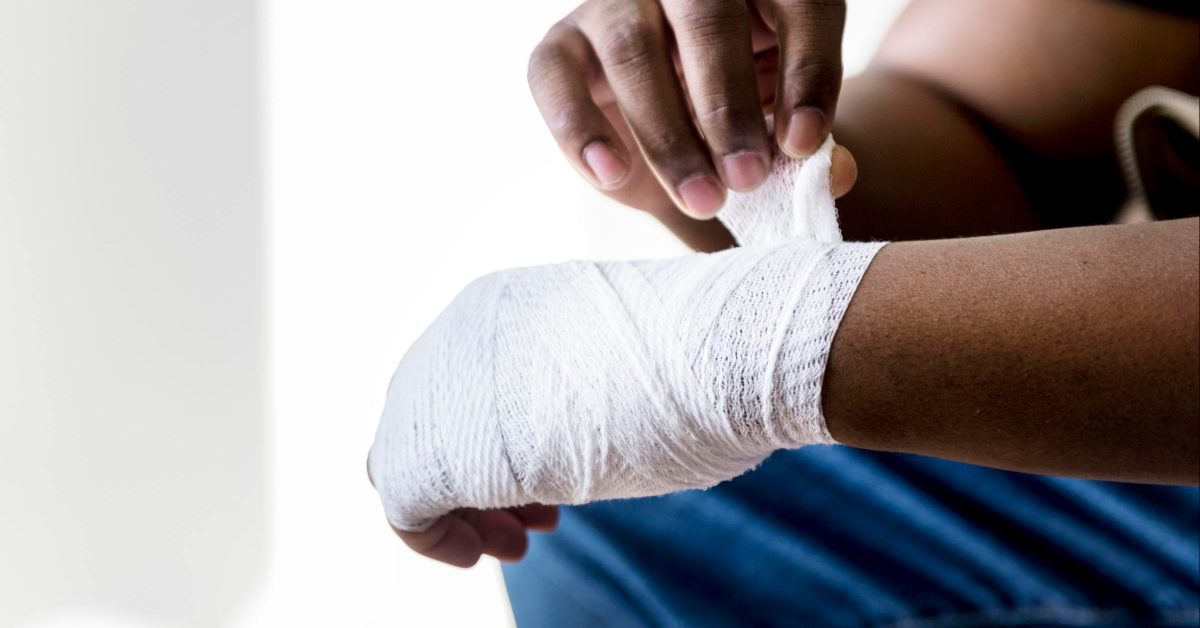As many of you know, I’ve been healing from a neck and shoulder injury. And sports and fitness injuries are the worst, right? Not only do you feel like the door has been slammed shut on making progress. But it’s also desperately depressing. All the activity you’re used to doing comes to an abrupt stop.
However, it’s possible to keep moving when suffering from an injury. Make sure to speak to your doctor first. But here are some of the activities your doctor or physical therapist may suggest.
 Ankles and feet
Ankles and feet
Clearly, if you’ve twisted your ankle or hurt your foot, you’re not going jogging for a while. But that isn’t an excuse to stay inactive. Focus on what you can do.
Weights are still an option for strength workouts. But you also can get your cardio by using a rowing machine or a static fitness bike. These are just a couple ways to keep moving.
Some circuit training activities will be good for you, too. If you don’t belong to a gym, find parks, beaches, and community centers that offer free circuit training machines. Just make sure you don’t overdo it or your ankle or foot will feel way worse.
Legs and knees
Damage to your legs and knees can be even more concerning than your ankles and feet. These injuries can feel very limiting. You might need to make a complete change to your routine. But with some creativity, you can make it work.
Running will definitely be out. But depending on the extent of your injury, you could try one-legged cycling, cycling with your arms, or even kayaking. Swimming might be OK but check with your physician first.
Think outside of the box. Focus on what you can do with the good leg. And remember there are ways to get cardio using your arms as well.
Hands and arms
Hand and arm injuries can be surprisingly frustrating. You think you]ll be able to run or take part in sports. But many activities can just exacerbate the problem. The arm at least passively moves with almost everything you do.
You need to be very careful working out or you’ll be looking for the best hand surgeon in town. Focus on a reduced range of motion. For instance, do that chest press, but not full force. And like with a leg injury, try doing exercises with just one arm while the other one heals.
If you really can’t face missing your morning run, make sure you wrap your arm properly to prevent further injury. But a better option might be to use a recumbent bike. This way, you get outdoors and do cardio while relieving your arms of any pressure.
 Low back injuries
Low back injuries
Of all injuries that can ruin your workouts, lower back problems are probably the worst. If you have a back injury, it’s essential that you talk to your doctor, and make sure you know precisely what you can and can’t do. In general terms, activities like walking, recumbent cycling and swimming tend to be safest.
Back injuries are truly an exercise of patience. But it’s important to take the time to heal. And remember that walking might not feel like much, but it works out your entire body. You probably won’t build muscle But you might not lose much if you keep active in gentle ways.
The bottom line
Injuries can be a tough blow when you’re in a good place with your fitness routine. However, it’s possible to keep going – albeit at a slightly slower pace. An injury isn’t the end. You can still keep yourself in shape, achieve your goals, and keep that weight off. Happy healing!
(This post contains affiliate links)
*Photo courtesy of Pexels


And in the “good news” department, an injury can be the thing to get you exercising. In the early 90s, I broke my collarbone the 2nd day of downhill skiing (yes, Erica, remember my post about the klutz!) and had to have my arm immobilized for 30 days. After that came pt and since my arm was so weak, I started weight training and have never stopped. Ah, Gilad & Denise Austin were such a help!
Great post! Take it easy, but MOVE.